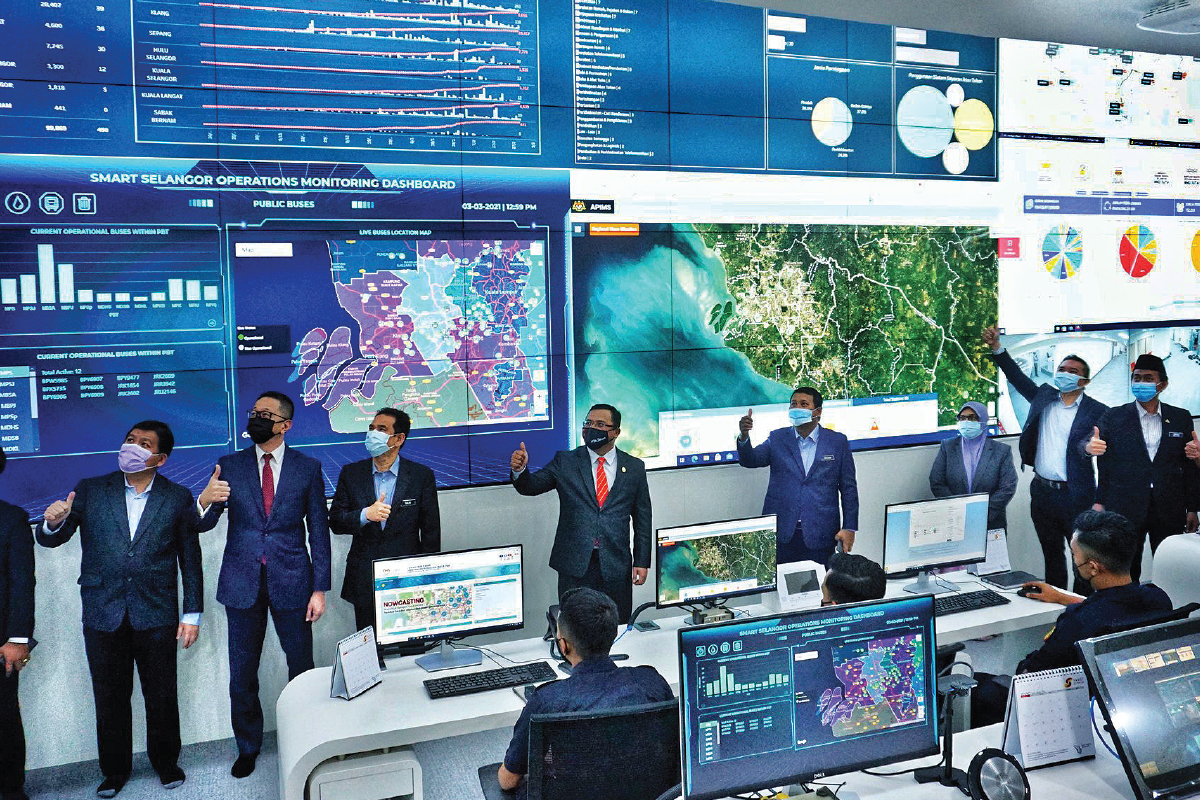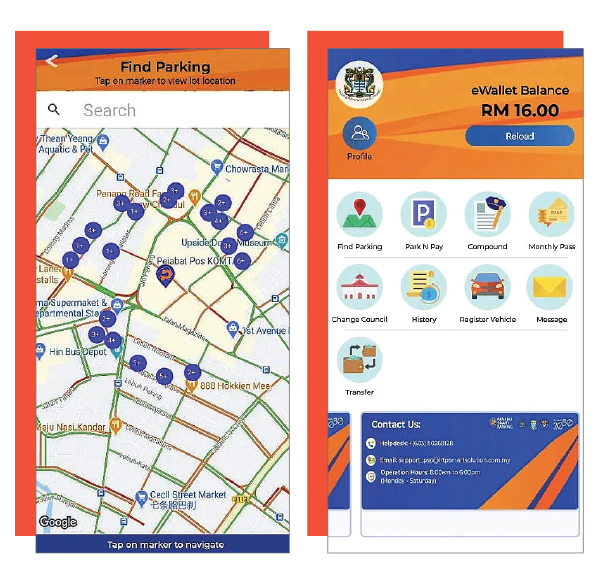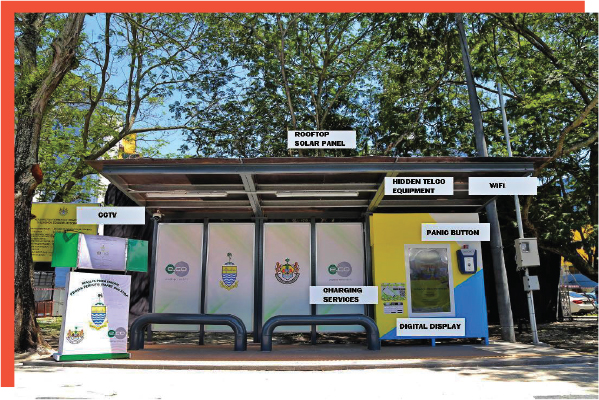Imagine a city where citizens can monitor in real time the location of buses or trains and authorities can do real-time surveillance of roads or traffic conditions. Officers are deployed immediately to fix broken traffic lights, potholes or broken pipes. Most processes, whether it is paying for parking or applying for licences, can be done online. And roads and new developments are built only after proper data analysis.
This is an ideal that smart cities around the world aim to reach. In general, smart cities use technology to improve the quality of life of their dwellers, develop a safe environment and increase economic opportunities for them.
A 2018 study by McKinsey estimates that cities can use technology to improve quality of life indicators by 10% to 30%, and help them make moderate or significant progress towards 70% of the UN’s Sustainable Development Goals.
This is important because cities house more than half of the world’s population and face increasing environmental pressures and infrastructure demands. Additionally, the pandemic has highlighted how some countries have successfully used technology to contain outbreaks in crowded cities.
In Malaysia, several states — Sarawak, Selangor, Penang and Johor — have embarked on their own smart city plans. The federal government launched the Malaysia Smart City Framework in 2019 to serve as a guide for local authorities.
Malaysia’s smart city plans tend to focus on two major areas — transport issues and cashless payments. Many have come up with apps for their citizens to use. In most cases, citizens need to download multiple apps to use various functions.
But it can be easy for “smart cities” to become merely a buzzword. Smart city pilot projects have been abandoned and the technologies underused, observes Brice Richard, digital and smart city lead at Arup, a Singapore-based design and engineering firm. Richard, who has worked with various governments on smart city projects, would know.
“There are three main traps that clients, including governments, tend to fall into. One is that a lot of them tend to be more tech-driven than outcome-driven. They tell us they want autonomous vehicles and drones, but they don’t know what problems they are trying to solve,” he points out.
This results in a lot of useless technologies being deployed that don’t actually solve problems. The second big mistake is the lack of sustainable business models for smart city plans, says Richard. “They come up with fancy plans, but don’t understand that it needs to be financially sustainable in the long run for someone to be able to maintain it.”
The third mistake is partnering with the wrong entities. “Whenever people think of smart cities, they go to tech vendors. However, they should first think about where the technology makes sense and where it doesn’t,” he says.
In other words, good smart city projects are those that are driven by a clear understanding of the problem. Sometimes, these problems don’t need high-tech solutions.
The current smart city plans in Malaysia seem to be more of a bottom-up effort by the states. Is a national framework necessary?
Richard believes it would be beneficial if the framework were linked to national priorities such as alleviating poverty or increasing health outcomes. And if it is tied to the national budget, it could provide financing assistance to cities.
Additionally, this can ensure that smart city plans are accessible to all. “For instance, the UK has the British Standards Institution, which made it mandatory for telecommunications companies to provide low-cost connectivity solutions to low-income populations. This kind of mandate from the government is the biggest guarantee that the smart city initiatives will follow this standard,” he says.
Adopt a systems approach
Some of these points are echoed by Think City Sdn Bhd managing director Hamdan Abdul Majeed. Smart city planners must take a systems approach, he says.
“First, smart cities should enable us to achieve a better quality of life. Second, they have a critical role in optimising our use of resources,” says Hamdan.
“For instance, ride hailing services allow us to use cars that would otherwise be sitting idly at home. From a systems standpoint, doing this enables us to reduce waste, enhance efficiency and mitigate climate change.”
The third dimension of smart cities is that it can encourage evidence-based decision-making. “Decisions cannot be made based on gut feel. It must be based on available information,” he says.
Finally, smart cities should enable predictive capabilities. Through technologies like remote sensing and big data analytics, governments can use more anticipatory or scenario-based approaches.
“In Malaysia, we can say that in achieving the first and second goals, we are at four out of 10. We’re probably at level 2 for evidence-based decision-making using real-time data. For the fourth goal, I think we are at zero,” says Hamdan.
Better data governance and sharing is crucial for many of these goals to be achieved, he believes. Additionally, “technology can be a great equaliser. There needs to be a broader approach to how smart cities are adopted in the country”, he adds.
Think City uses technology to support evidence-based decision-making, whether it is for adaptive use of historical buildings, placemaking or urban analytics. For instance, it created a tech-enabled safety auditing tool to identify zones in the city that have high safety risk. Last month, it released a study measuring temperature trends in Malaysian cities and the contributing factors.
Selangor: Collecting data for smart decision-making
The Smart Selangor Delivery Unit (SSDU) was established in 2016 to make Selangor a liveable smart state by 2025. The blueprint focuses on four areas: smart government, economy, digital infrastructure and community.
The initiatives that the state has delivered include an intelligent traffic monitoring system in Subang Jaya that monitors the main arterial roads; cashless transactions (CEPat and Smart Selangor Parking app); the Selangor Intelligent Transport System (SITS), an app that tracks Smart Selangor buses; and 14 smart bus stops equipped with WiFi and CCTV cameras. It also launched the Smart Selangor Data Centre and Selangor Gigabit Network.
Providing equitable services is a key focus of the state, given that Selangor covers both metropolitan and rural areas, says SSDU managing director Fahmi Ngah.
Smart city initiatives can also provide real-time data so authorities can introduce more targeted policies in the future. “[For instance,] if we know a municipality has 27,000 parking bays but the registered users on the Smart Selangor Parking app is double that amount, it means we probably need to build more parking bays there,” he says.

The Selangor Intelligence Operations Centre was launched last month
Another example is the SITS app to use the Smart Selangor buses. Citizens can use the app to see the arrival times of buses while the authorities can use the app to monitor whether the buses are punctual and following the correct route.
“Do you know how the officers used to monitor the routes? They literally take time off from the office to hop on a bus to track the route. When they aren’t there, the bus drivers take short cuts. We’ve had problems like this,” says Fahmi, adding that the state has noticed an improvement in bus services after the SITS app was launched.
Bus users also need to use their phones to scan with the CEPat app before they board a Smart Selangor bus. This enables officers to monitor real-time utilisation of the services.
Why are there two apps for the use of public transport in Selangor? Fahmi says SITS doesn’t have an e-payment feature, and the decision to charge foreigners for Smart Selangor bus rides was made in 2020, so the CEPat app is used for that purpose.
Can Smart Selangor solve the people’s problems?
The Smart Selangor blueprint has around 60 initiatives, with eight of those currently implemented statewide. According to Fahmi, the progress of implementation is at 52% to date.
Most people in the state would probably cite traffic congestion and water supply cuts as the main challenges. Can the smart city plan address this?
Fahmi says they are looking for solutions, but it is not simple. Since the pollution occurs at the raw water source, monitoring the state’s huge water basin is a challenge.
“The operators on the ground are risking their lives to curtail this problem. The only way to detect chemical spill pollution is by smell,” he says.
“There is a team that goes on a boat, with a guy sitting in front, following the smell upstream to find the source of the pollution. It’s hazardous and there is no technological way to do it yet.”
Another challenge is that the problem involves many agencies that are not necessarily communicating with each other. SSDU is planning to run programmes with these stakeholders to find solutions together with the private sector, says Fahmi.
As for traffic congestion, the state is hoping to address it by improving the public transport system and use technology to monitor traffic. Selangor is currently using licence plate recognition cameras to understand where the traffic flows.
“With data, we will know if we need to build more roads, where they should be. And if we need to reduce cars coming in, where it should be done,” says Fahmi.
Another hot topic in the state is the poor conditions of some roads. Through a partnership with Waze, users can report potholes on the app, he says. As there are four owners when it comes to roads in Selangor, the reports will be directed to the right authority.
“We get about 200 to 300 reports a month through Waze. Since the introduction of the system in 2018, the efficiency in patching potholes has increased to 95%. To date, we have patched around 31,500 potholes,” says Fahmi.
But potholes on the road are a symptom of a bigger problem, which could be that the roads are used beyond their capacity. The latter can occur if many container trucks are going through the area.
“Now, we know exactly where the repeat cases are. So, we can prioritise areas where roads need to be rebuilt. We may also need to review the technical specifications for design since design guidelines from the previous decade may no longer be suitable,” he says.
Connectivity, of course, is another huge problem. While this responsibility may fall more on the federal government and telecommunications companies, the state has also been building digital infrastructure for itself.
The Selangor Gigabit Network and Smart Selangor Data Centre provide connectivity and cloud storage for the state government, while the Smart Selangor Operations Centre monitors selected critical state services.
The SSDU is also working to publish more data on its initiatives. “This is another facet of smart cities. The government must be brave enough to share the efforts it has made to reduce mistrust between the government and citizens,” says Fahmi.
The budget for SSDU is around RM10 million annually, he adds. Currently, it is working on a model to allow the private sector to contribute to a matching fund and, if possible, take Selangor’s innovations to the wider market.
Kuching: New but not lagging behind
The Kuching Smart City Masterplan, which is aligned with the Sarawak Digital Economy Strategy, was completed at end-2020.
However, some smart city-related initiatives have been in place since 2017. Among them are the upgrading of 42 road junctions in the city with a smart traffic light system to optimise traffic flow and reduce congestion.
The state has also introduced cashless payments in the form of Sarawak Pay, an e-wallet that is accepted by more than 60,000 merchants in the state.

An artist’s impression of the Sarawak Integrated Operation Centre
“To a certain extent, we have made the cashless lifestyle mainstream, with over RM70 million worth of transactions recorded monthly. We have also reduced travel time on roads by an average of 25% and we have implemented a contract tracing system to reduce the number of Covid-19 cases compared with other states,” says Tan Chee Kang, head of the digital economy unit at the Sarawak Multimedia Authority (SMA).
The state has also introduced a digital identity platform known as Sarawak ID. According to Tan, more than 20% of Sarawak’s population have registered and are using it for end-to-end services, including to register for Sarawak Pay and other government digital services.
The Sarawak Integrated Operation Centre (SIOC) has been completed and is expected to start operating in September. It will use CCTV cameras and Internet of Things-connected sensors or devices located around the city to allow for faster detection of crimes, accidents and other incidents.
These initiatives were identified through a study of the feedback from the public about the problems they face, says Tan. The CCTV cameras and sensors can be deployed to provide alerts to the public before flash floods occur, for instance, and smart traffic lights can help reduce traffic congestion.
What about connectivity? In Sarawak’s digital economy strategy, 600 telecommunications towers will be erected under the Sarawak Multimedia Authority Rural Telecommunication Project. To date, it has already erected 233 towers in rural and suburban areas, says Tan.
The smart city plan is still new, so he isn’t able to provide an estimate of the costs so far. “Our strategy is to develop and implement enabling factors, especially the necessary digital infrastructure, talent, platforms and good governance. Open data and digital infrastructure will allow data-driven and service innovations to be contributed by all parties,” he says.
Penang: Driving smart city goals with the private sector
Penang’s smart city goals were determined in 2017, when the state executive council came up with the vision of making Penang a smart international city by 2030. The vision will also focus on making Penang a green, smart and family-focused state, says state executive councillor Jagdeep Singh Deo.
Smart city initiatives have become essential to manage the pandemic, he adds. For him, the transition to cashless payments is of great importance.
“Today, when you go to the Penang City Council to pay your bills, you can make cashless payments. We started promoting cashless payments in wet markets last year as well. Now, we have cashless payment transactions for 23 government agencies going into the billions,” says Jagdeep.
Penang’s smart city plan has more than 70 initiatives that touch on smart government, mobility, environment, economy and community. To date, 33 initiatives have been implemented.
Some of the initiatives that have been launched include the Penang Intelligent Traffic and Transport System (an app to track the Rapid Penang bus service and lodge traffic complaints), Penang Digital Library (provides access to e-books and digital learning initiatives) and smart bus stops (equipped with USB charging pods, a panic button and WiFi).
How can Penang make sure these initiatives solve problems faced by citizens on the ground? For instance, can it address government bureaucracy, a pain point for many?

Screenshots of the Penang Smart Parking app
“We have 23 agencies in Penang and all their services are online now. We are trying to reduce bureaucracy and get things done online,” says Jagdeep.
What about traffic congestion? He says Penang has addressed this by launching the country’s first smart car parking system. It has installed sensors in almost 20,000 of the 36,000 car parks in the state so that citizens can check using the Penang Smart Parking app to see if there are parking spots available.
“I think 50% of traffic congestion happens because people keep driving around looking for parking. Our app will tell you to go directly to an empty car park space in a particular spot,” says Jagdeep. This service has already been launched on Penang island.
Meanwhile, the state’s Intelligent Operation Centre (IOC) controls its smart CCTVs. Over 1,000 smart CCTVs in the state have facial recognition technology installed.

A smart bus stop in Penang
“When you break traffic laws, we will know who you are. Our IOC is also continuously examining traffic hotspots. If our CCTV shows that your car is blocking traffic, it can notify our officers to immediately go there and give you a summons,” he says.
Several of Penang’s smart city initiatives are done in collaboration with private companies. The smart bus stops are funded and installed by edotco Malaysia Sdn Bhd. So far, two of these have been installed. IBM worked with the state to set up the IOC while Eastern & Oriental Bhd, Keysight Technologies and TIME dotCom Bhd collaborated to build the Penang Digital Library.
“These companies have the expertise, so it’s important for us to embrace them because they get the work done quickly,” says Jagdeep.
So far, the state has spent more than RM100 million on these projects. The return on investment will most likely come from savings. Jagdeep points to the smart parking system as an example. “Instead of getting my officer to collect your summons because you didn’t park in the right place, you can just pay it online,” he says.
SOURCE: https://www.theedgemarkets.com/article/cover-story-how-smart-are-our-cities












